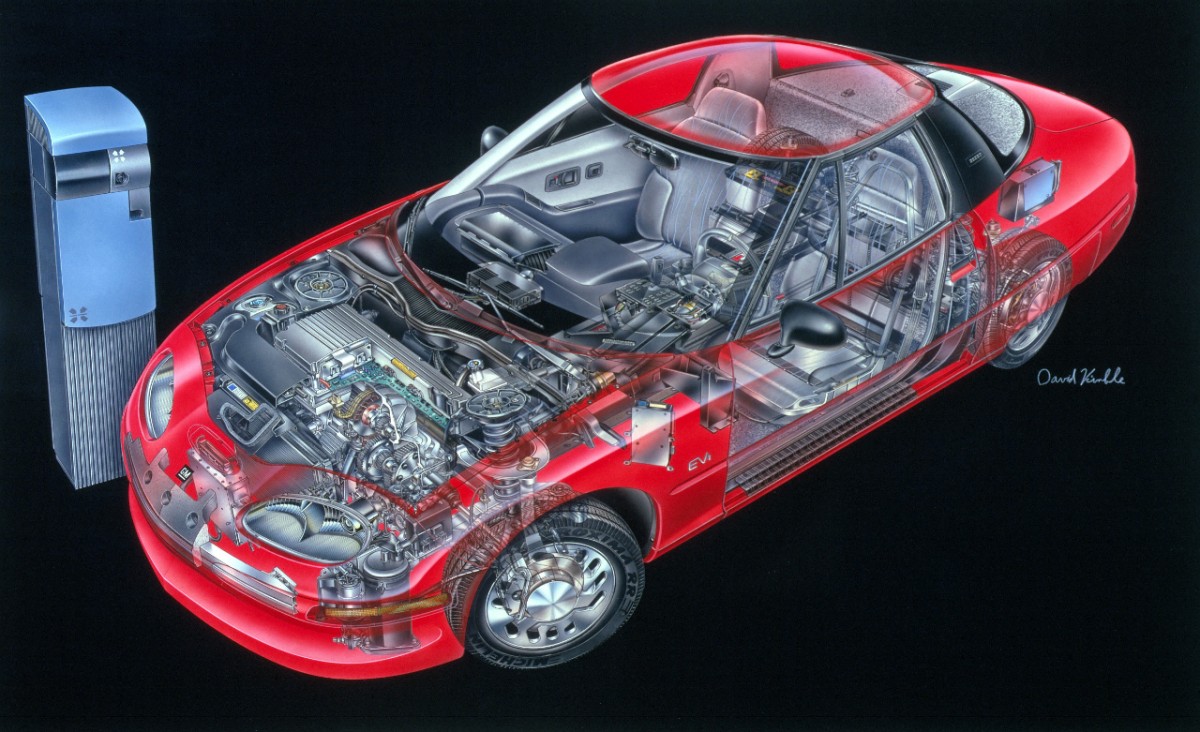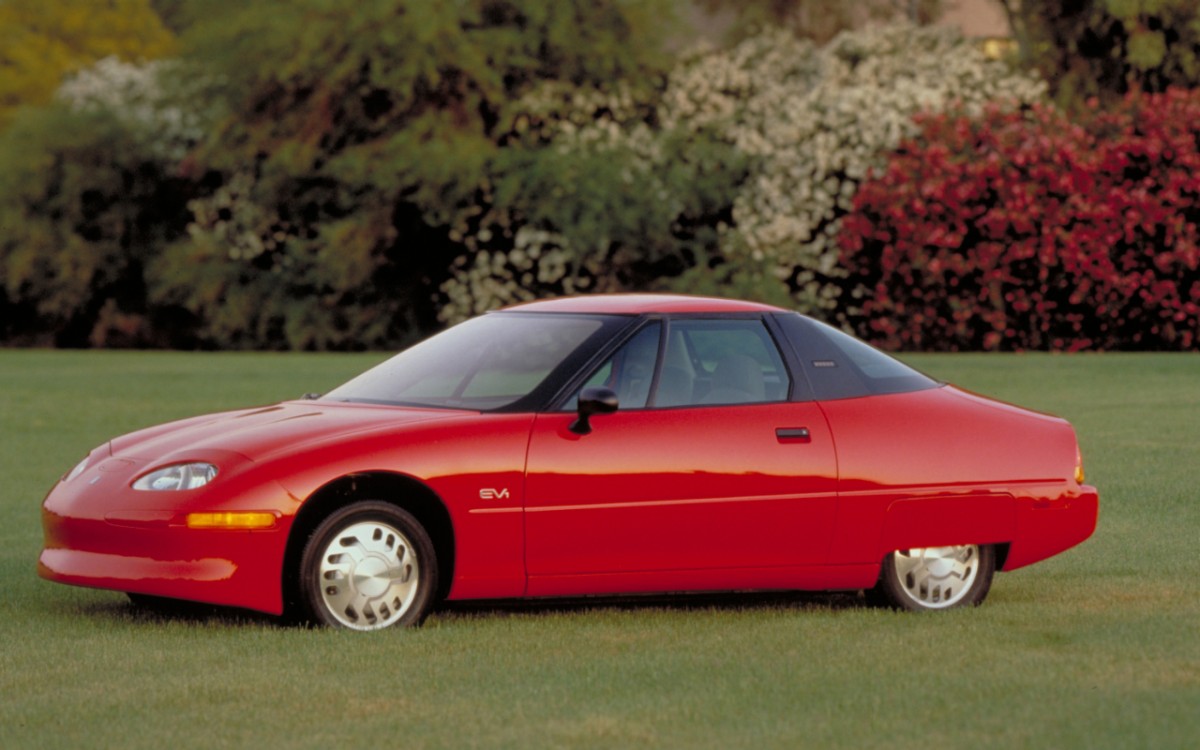Media | Articles
The EV1 may have been first, but its demise launched Tesla
Do you loathe the electric car movement? Focus your anguish on General Motors’ star-crossed attempt to begin the crusade a quarter century ago.
In 2003, after leasing 1117 battery-electric EV1s to forward-thinking customers, GM chairman Rick Wagoner concluded that the corporation couldn’t afford to keep what amounted to an experimental fleet running. Orders were issued to crush all but a handful of the cars upon completion of their lease agreements. Heartbroken EV1 leasees actually conducted funeral services for their cars and conspiracy theories surfaced in the film Who Killed the Electric Car? Of the 40 or so EV1 survivors donated to museums, one and only one—the car destined for display at the Smithsonian’s National Museum of American History—was left in running condition.
We bring this up because EV1 is both the first modern electric car and the seed that grew into Tesla. Disgusted by GM’s crushing directive, Martin Eberhard and Marc Tarpenning founded Tesla Motors in July 2003. Six months later, Elon Musk kicked in major funding to become the budding venture’s chairman. Tesla will soon deliver its one millionth electric, permanently disrupting the traditional car business. That said, earning a profit has proven elusive for this Silicon Valley-based enterprise.

Like every circumspect car company, GM considered electric cars for decades before launching the EV1 in 1996. In the late ’60s, GM collaborated with Boeing to build electric Lunar Rovers to support Apollo missions. In the late ’80s, GM advanced electric car efficiency with the solar-charged Sunraycer to win the Australian Solar Challenge race. In 1994, a specially tuned Impact precursor to the EV1 topped 183 mph at a Texas test track. Two years later, the production EV1 two-seat coupe was unveiled at the Los Angeles and Detroit auto shows.
Marketplace
Buy and sell classics with confidence
The EV1’s mix of advanced and rustic technology illustrates just how far car design has advanced in a quarter century. Its chassis is a welded-and-bonded aluminum backbone similar in many respects to the eighth-generation Corvette. Body panels are lightweight, molded composite plastic shaped to minimize both the drag coefficient (0.19) and the frontal area (20.3 ft2). On the debit side, EV1’s lead acid battery pack weighed 1175 pounds and provided only 17 kWh of energy (versus a base Tesla Model 3’s 50 kWh) and less than 100 miles of driving range (versus 220 miles for the Tesla Model 3). The introduction of a second-gen EV1 in 1999 brought new NiMH batteries rated at 26 kWh and offering 160 miles of driving range but longer recharge times. EV1s could accelerate from rest to 60 mph in 8.5 seconds; while that’s leisurely by today’s standards, it was comparable to a late-1990s 3-series BMW.
Tesla “borrowed” other worthy lessons from GM’s venturesome R&D department. The skateboard propulsion platform GM revealed in its 2002 AUTOnomy concept became the de facto blueprint for integrating electric vehicle battery packs with structural underpinnings. GM’s 2003 Hy-Wire concept demonstrated that just about any body could be suitably mounted atop the innovative skateboard footings.
20200123151232)
The suppository shape and two-person cockpit were not the EV1’s best attributes. Engineering lessons learned did, however, make the leap to the 2010 Chevy Volt, the world’s first mass-produced plug-in hybrid, and the 2017 Chevy Bolt, among the first affordable (if not profitable) battery-electric vehicles.
CEO Mary Barra never hesitates touting GM’s commitment to an all-electric future. What she doesn’t say much about is Tesla’s lengthy lead in reaching that day. Even though Tesla suffers from a lack of profitability, investors have raised its market capitalization over $77-billion, 49-percent greater than GM and more than double Ford’s market cap.
All-electric Ford F-150 pickups and Chevy Suburbans are under development for release sooner than you might imagine. GM and Ford have joined Tesla pondering how the global energy infrastructure can be updated to replace fossil fuels with kilowatts drawn from the sun via rooftop solar panels. The day will come when classic car enthusiasts will join the electrification movement while treasuring a drum or two of high octane gasoline to maintain their connection to internal combustion.

20200123151223)
20200123151117)
20200123151123)
20200123151010)
20200123151037)
20200123151044)
20200123151051)
20200123151131)
20200123151140)
20200123151148)
20200123151155)
20200123151203)
20200123151216)

